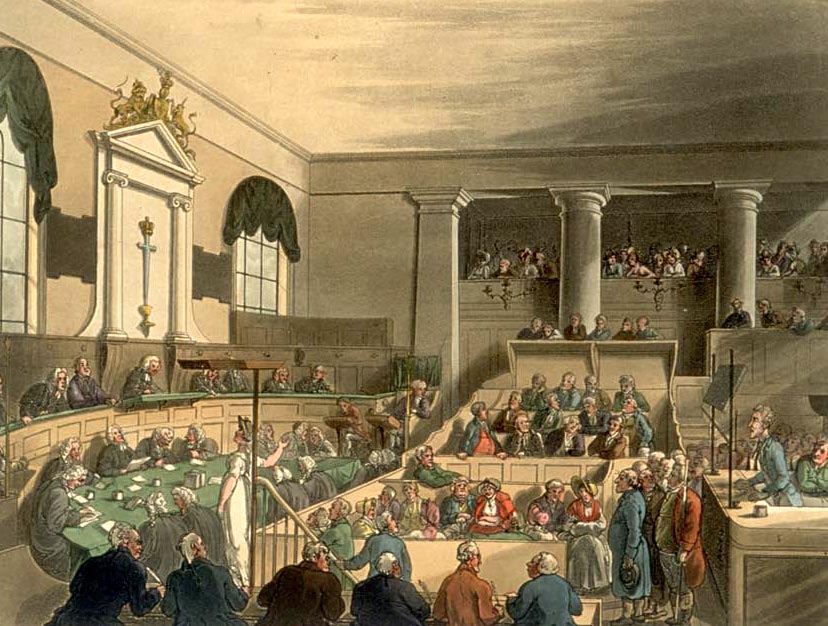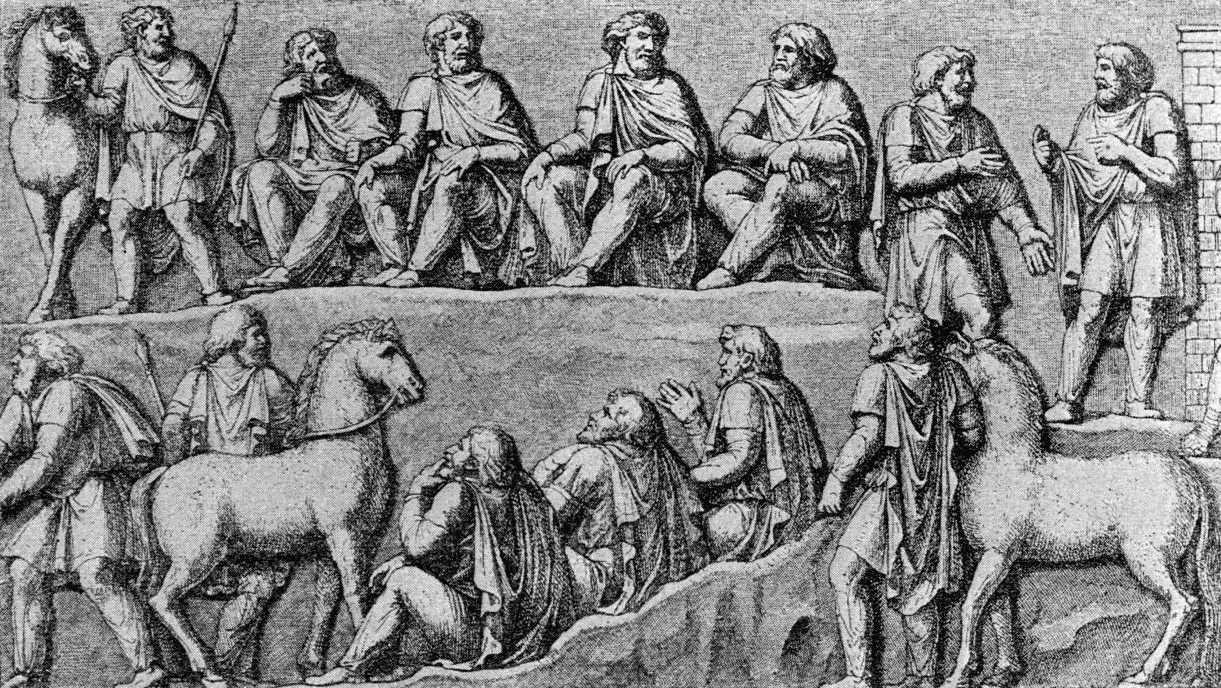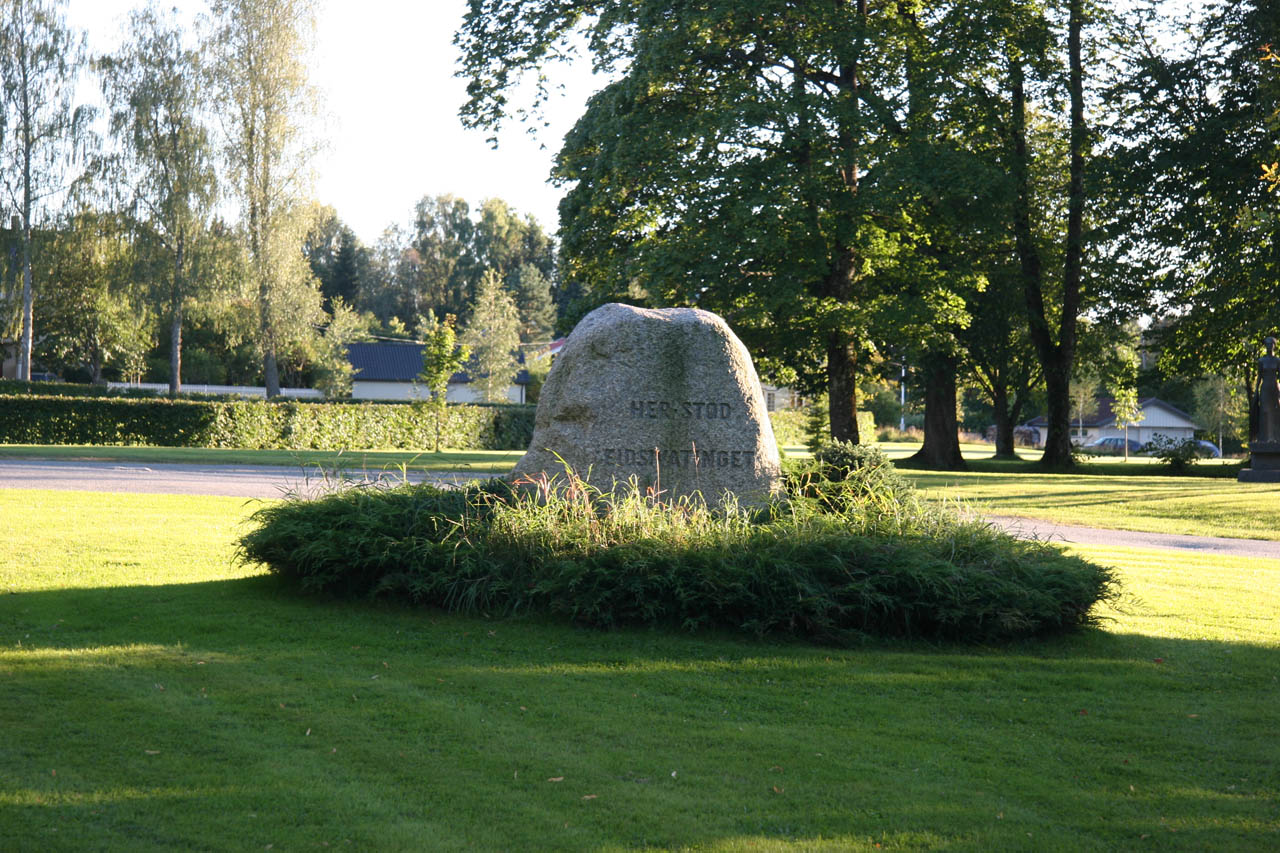|
Eidsivating Court Of Appeal
The Eidsivating Court of Appeal () is one of six courts of appeal in the Kingdom of Norway. The Court is located in the city of Hamar, with jurisdiction over the Eidsivating judicial district (), comprising the counties of Innlandet, Østfold, and most of Akershus (except for Lunner Municipality and Jevnaker Municipality). It can rule on both civil and criminal cases that are appealed from one of its subordinate district courts. Court decisions can, with limitations, be appealed to the Supreme Court of Norway. The chief judicial officer of the court () is Nina Sollie. The court is administered by the Norwegian National Courts Administration. Location The Court has its seat in the town of Hamar, and also permanently sits in the towns of Gjøvik, Lillehammer, and Eidsvoll. The Court may also sit in other places within its jurisdiction as needed. Jurisdiction This court accepts appeals from all of the district courts from its geographic jurisdiction. This court is divided in ... [...More Info...] [...Related Items...] OR: [Wikipedia] [Google] [Baidu] |
Akershus
Akershus () is a county in Norway, with Oslo as its administrative centre, though Oslo is not located within Akershus. Akershus has been a region in Eastern Norway with Oslo as its main city since the Middle Ages, and is named after the Akershus Fortress in Oslo and ultimately after the medieval farm Aker in Oslo. From the Middle Ages to 1919, Akershus was a main fief and main county that included most of Eastern Norway, and from the 17th century until 2020 and again from 2024, Akershus also has a more narrow meaning as a smaller central county in the Greater Oslo Region. Akershus is Norway's largest county by population with over 716,000 inhabitants. Originally Akershus was one of four main fiefs in Norway and included almost all of Eastern Norway. The original Akershus became a main county (''Stiftamt'' or ''Stift'') in 1662 and was sometimes also known as ''Christiania Stift''. It included several subcounties (''Amt'' or ''Underamt''); in 1682 its most central areas, con ... [...More Info...] [...Related Items...] OR: [Wikipedia] [Google] [Baidu] |
Romerike Og Glåmdal District Court
Romerike og Glåmdal District Court () is a district court (Norway), district court located in Innlandet and Akershus counties in Norway. This court is based at three different courthouses which are located in Eidsvoll (village), Eidsvoll, Kongsvinger (town), Kongsvinger, and Lillestrøm (town), Lillestrøm. The court serves the southeastern part of Innlandet county and the northern part of Akershus county. The court is subordinate to the Eidsivating Court of Appeal. The court accepts cases from 16 municipalities as follows: *The courthouse in Kongsvinger (town), Kongsvinger accepts cases from the municipalities of Eidskog Municipality, Eidskog, Grue Municipality, Grue, Kongsvinger Municipality, Kongsvinger, Nord-Odal Municipality, Nord-Odal, and Sør-Odal Municipality, Sør-Odal. *The courthouse in Eidsvoll (village), Eidsvoll accepts cases from the municipalities of Eidsvoll Municipality, Eidsvoll, Hurdal Municipality, Hurdal, Nannestad Municipality, Nannestad, Nes Municipality ... [...More Info...] [...Related Items...] OR: [Wikipedia] [Google] [Baidu] |
Courts Of Appeal Of Norway
A court is an institution, often a government entity, with the authority to adjudicate legal disputes between parties and administer justice in civil, criminal, and administrative matters in accordance with the rule of law. Courts generally consist of judges or other judicial officers, and are usually established and dissolved through legislation enacted by a legislature. Courts may also be established by constitution or an equivalent constituting instrument. The practical authority given to the court is known as its jurisdiction, which describes the court's power to decide certain kinds of questions, or petitions put to it. There are various kinds of courts, including trial courts, appellate courts, administrative courts, international courts, and tribunals. Description A court is any person or institution, often as a government institution, with the authority to adjudicate legal disputes between parties and carry out the administration of justice in civil, criminal, a ... [...More Info...] [...Related Items...] OR: [Wikipedia] [Google] [Baidu] |
Norwegian News Agency
The Norwegian News Agency (; abbreviated NTB) is a Norwegian press agency and wire service that serves most of the largest Norwegian media outlets. The agency is located in Oslo and has bureaus in Brussels in Belgium and Tromsø in northern Norway. NTB operates 24 hours a day, with the night service handled from a bureau in Sydney, Australia since 2015. The photo agency Scanpix is a wholly owned subsidiary of NTB. History and profile NTB was established in 1867. In the early years it was privately owned. After World War I, the agency was acquired by AS Norsk Telegrambyrå, a limited company owned by a group of newspapers. Images have been part of their news services since 1932. It is closely held by large media corporations, including Edda Media (26.1%), Schibsted (20.6%), A-Pressen (20.5%), the Norwegian Broadcasting Corporation (10.5%), Adresseavisen (; commonly known as ''Adressa'') is a regional newspaper published daily, except Sundays, in Trondheim, Norway. The paper ... [...More Info...] [...Related Items...] OR: [Wikipedia] [Google] [Baidu] |
Wilhelm Omsted
Wilhelm Omsted (born 24 May 1939) is a Norwegian lawyer and judge. He graduated with the cand.jur. degree in 1967, and worked as a deputy judge in Hardanger and a secretary in the Ministry of Justice. From 1971 he was a lawyer, since 1973 in his own lawyer's firm. In 1976 he received his barrister's license, with permission to work with Supreme Court cases. From 1985 to 1988 he was a board member of the Norwegian Bar Association. In 1988 he became a presiding judge in Eidsivating Court of Appeal. When Borgarting Court of Appeal was created out of Eidsivating in 1995, he became a presiding judge there. He has also held lectures at the University of Oslo. He resides in Frogner Frogner is a residential and retail borough in the East End and West End of Oslo, West End of Oslo, Norway, with a population of 59,269 as of 2020. In addition to the original Frogner, the borough incorporates Bygdøy, Uranienborg, Norway, Urani .... References 1939 births Living people 20th-cent ... [...More Info...] [...Related Items...] OR: [Wikipedia] [Google] [Baidu] |
Viken (county)
Viken was a short-lived county in Norway that existed from 1 January 2020 to 1 January 2024. Its name was derived from the historical region in present-day Norway and Sweden. The county was located in Eastern Norway when it was established on 1 January 2020 by the merger of Akershus, Buskerud and Østfold with the addition of the municipalities of Jevnaker, Lunner and the former Svelvik Municipality. Both its creation and its name—described as unhistorical by historians—were controversial from the onset, the merger was resisted by all the three counties and the new county had an approval rating of about 20% in the region. Viken has been compared to gerrymandering. The newly constructed coat of arms of Viken lacked a historical basis and was described by experts as an amateurish logo that did not adhere to the rules of heraldry, and as "three flying saucers under a cap." The county executive of Viken determined in 2019, before the merger had taken effect, that the county ... [...More Info...] [...Related Items...] OR: [Wikipedia] [Google] [Baidu] |
Storting
The Storting ( ; ) is the supreme legislature of Norway, established in 1814 by the Constitution of Norway. It is located in Oslo. The Unicameralism, unicameral parliament has 169 members and is elected every four years based on party-list proportional representation in nineteen Voting systems#Multiple-winner methods, multi-seat constituencies. A member of the Storting is known in Norwegian as a ''stortingsrepresentant'', literally "Storting representative". The assembly is led by a president and, since 2009, five vice presidents: the presidium. The members are allocated to twelve standing committees as well as four procedural committees. Three ombudsmen are directly subordinate to parliament: the Norwegian Parliamentary Intelligence Oversight Committee, Parliamentary Intelligence Oversight Committee and the Office of the Auditor General of Norway, Office of the Auditor General. Parliamentary system, Parliamentarianism was established in 1884, with the Storting operating a form ... [...More Info...] [...Related Items...] OR: [Wikipedia] [Google] [Baidu] |
Borgarting Court Of Appeal
The Borgarting Court of Appeal () is one of six intermediate courts of appeal in the Kingdom of Norway. The Court is located in the city of Oslo. The court has jurisdiction over the counties of Oslo, Buskerud, and parts of Akershus and Østfold. These areas constitute the Borgarting judicial district (). This court can rule on both civil and criminal cases that are appealed from one of its subordinate district courts. Court decisions can be, to a limited extent, appealed to the Supreme Court of Norway. The court has 62 judges and 45 administrative staff. The chief judicial officer of the court () is currently Marianne Vollan. The court is administered by the Norwegian National Courts Administration. Location The Court has its seat in the city of Oslo. Additionally, the Court permanently sits in the town of Drammen. The Court may also sit in other places within its jurisdiction as needed. The main courthouse in Oslo was built in 2005. It is an eleven story building with four sto ... [...More Info...] [...Related Items...] OR: [Wikipedia] [Google] [Baidu] |
Eastern Norway
Eastern Norway (, ) is the geographical region of the south-eastern part of Norway. It consists of the counties Oslo, Akershus, Vestfold, Østfold, Buskerud, Telemark, and Innlandet. Eastern Norway is by far the most populous region of Norway. It contains the country's capital, Oslo, which is Norway's most populous city. In Norwegian, the region is called ''Østlandet'' and ''Austlandet'' () in contrast to Vestlandet (). Geography As of 2015, the region had 2,593,085 inhabitants, 50.4% of Norway's population. The region is bounded by mountains in the north and west, the Swedish border to the east and by Østfold and Skagerrak to the south. The border towards Sørlandet is less obvious. The mountains reach a height of 2469 metres in the Jotunheimen mountain range, the highest point in the Nordic countries (excluding Greenland). Other prominent mountain ranges include part of the Dovrefjell in the far north of the region, the Rondane north east of Lillehammer and othe ... [...More Info...] [...Related Items...] OR: [Wikipedia] [Google] [Baidu] |
Thing (assembly)
A thing, also known as a folkmoot, assembly, tribal council, and Thing (assembly)#Etymology, by other names, was a governing assembly in early Germanic peoples, Germanic society, made up of the free people of the community presided over by a lawspeaker. Things took place regularly, usually at prominent places accessible by travel. They provided legislative functions, as well as social events and trade opportunities. In modern usage, the meaning of this word in English and other languages has shifted to mean not just an assemblage of some sort but simply an object of any kind. Thingstead () or "thingstow" () is the English term for the location where a thing was held. Etymology The word appears in Old Norse, Old English, and modern Icelandic language, Icelandic as , in Middle English (as in modern English), Old Saxon, Old Dutch, and Old Frisian as (the difference between ''þing'' and ''thing'' is purely orthographical), in German language, German as , in Dutch language, Dut ... [...More Info...] [...Related Items...] OR: [Wikipedia] [Google] [Baidu] |
Eidsivating
Eidsivating () was one of the four ancient popular assemblies or things (') of medieval Norway. Historically, it was the site of court and assembly for the eastern parts of Norway, and was located at Eidsvoll. History Traditionally, Eidsivating was the court for the population around Lake Mjøsa. Eidsivating was originally situated at Åker gård, the seat of Vang in Hedmark county, Norway. When Norway was united as a kingdom, the four independent ' – Frostating, Gulating, Borgarting, and Eidsivating – were the most supreme bodies of law, acting as both legislative assemblies and courts. These were representative assemblies at which delegates from the various districts in each region met to award legal judgments and pass laws (). Later, during the time of Olaf the Holy, the court was moved to Eidsvoll. The jurisdiction of the court was then extended to include Romerike and Hadeland as well as Hedmark. Later Østerdalen and Gudbrandsdalen were also included. In 127 ... [...More Info...] [...Related Items...] OR: [Wikipedia] [Google] [Baidu] |




